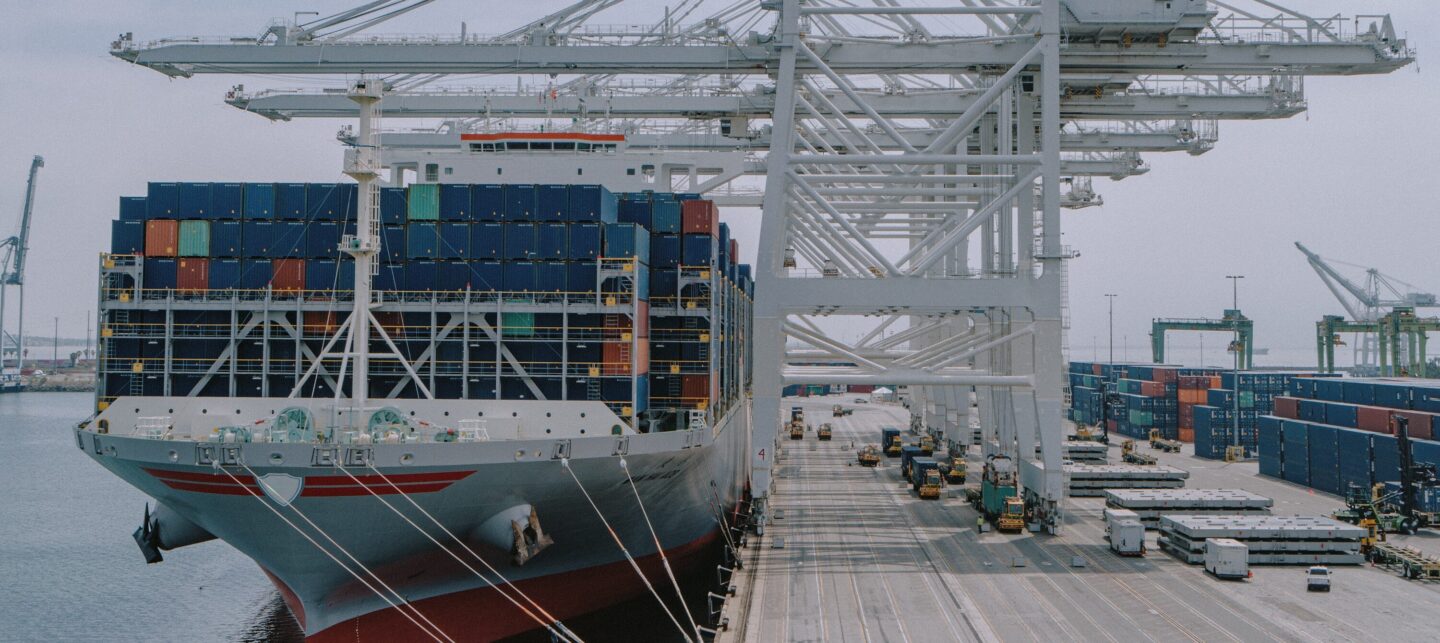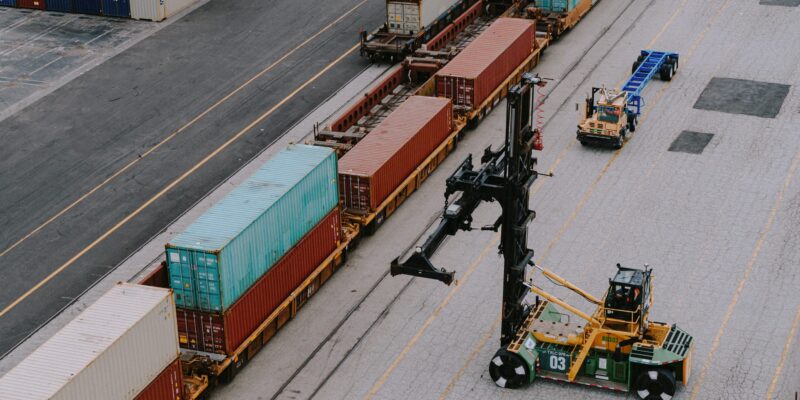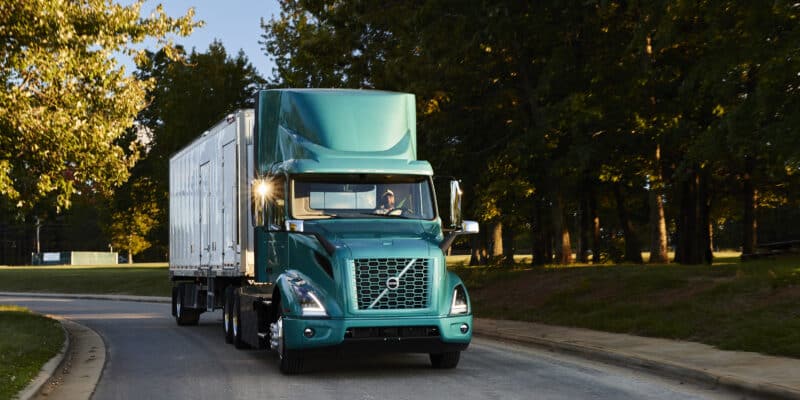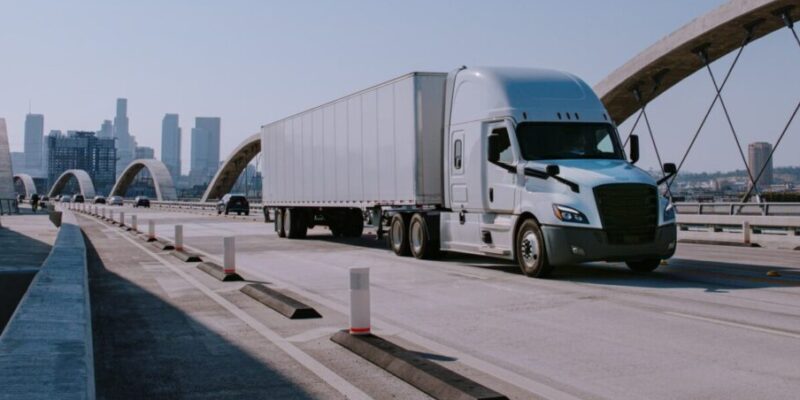A guide to ocean freight shipping

With global trade flowing like the tides, the ocean freight industry highlights human ingenuity and the determination to connect markets across vast distances. Valued at a remarkable USD 75 million in 2022 and projected to reach USD 89.9 million by 2028, the industry’s growth is driven by the increasing demand for goods and services worldwide. Doubling cargo volume from 1990 to 2021, with a 43% increase in fleet capacity, underscores the sector’s vital role in international commerce.
Navigating through this evolution, strategically managing fleet capacities, and understanding market dynamics indicate a strong future for sea freight shipping.
What is ocean freight?
Ocean freight transports goods and cargo over water, typically through large ships or vessels. This type of freight is often used for long distances and bulky or heavy items that are not time-sensitive. It is one of the most cost-effective and widely-used forms of transportation for international trade, allowing businesses to ship goods across oceans and continents at a reasonable price.
Types of ocean freight shipping services
Several types of ocean freight services are available, each with unique features and benefits. Some of the most common types include:
Full container load (FCL)
In this type of service, a single shipper’s goods occupy entire shipping containers. It is typically used for shipping large quantities of goods by one company or individual.
- FCL is ideal for shipping large quantities of goods, as it allows maximum container space utilization.
- It also benefits businesses that need to ship their goods with minimal handling and potential damage.
- This service provides more control over shipping, as the entire container is allocated to one shipper.
FCL would be useful for a furniture company shipping a large order of couches to a retailer in another country. The company can fill an entire container with the couches, ensuring they are safely and efficiently shipped without needing to share space with other goods. This also allows for easier tracking and handling of the shipment.
Less than container load (LCL)
This service is used when a shipper’s goods do not fill an entire container. The remaining space in the container may be filled with goods from other shippers, resulting in cost savings for each individual.
- LCL is a cost-effective option for businesses that do not have enough goods to fill an entire container.
- It also allows shippers to split shipping costs with other companies, resulting in savings for all parties involved.
LCL would be useful for a small business owner who wants to ship their handmade crafts to customers overseas. The business may not have enough goods to fill an entire container, but with LCL, they can share the space and costs with other shippers. This allows them to expand their business internationally without breaking the bank on shipping expenses.
Roll-On/Roll-Off (Ro-Ro)
In this type of service, vehicles and heavy equipment are loaded onto a specialized ship that allows them to be driven on and off the vessel. This is commonly used for transporting cars, trucks, tractors, and other large vehicles.
- Ro-Ro is a quick and efficient method for shipping vehicles and heavy equipment.
- It eliminates the need to dismantle and reassemble the items, saving time and potential damage.
Ro-Ro would be useful for a car manufacturer sending their cars to dealerships in other countries. They can simply drive the cars onto the vessel, eliminating the need for costly disassembly and reassembly. This also reduces the risk of damage during transit.
Break bulk
Break bulk shipping involves loading individual pieces of cargo onto a ship rather than using containers. It is typically used for oversized or irregularly shaped items that cannot fit into standard containers.
- Break bulk allows for transporting large or awkwardly shaped items that cannot fit into containers.
- It also provides flexibility in terms of loading and unloading, as each item can be handled individually.
Break bulk would be useful for a construction company sending heavy machinery and equipment overseas. These items are often too large to fit into containers, but with break bulk shipping, they can still be transported safely and efficiently. This also allows the company to easily access its equipment upon arrival at the destination port.
How to ship using ocean freight
Ocean freight logistics depends heavily on the support of third-party entities known as freight forwarders. These intermediaries, or ocean freight forwarders, typically refer to external individuals or companies who handle the collection, organization for loading, and proper delivery of goods to their final destinations for shipping. This reliance is due to the essential need for trusted assistance in gathering goods from the seller, coordinating shipping processes, and ensuring successful loading onto ships.
Understanding the shipping contract is crucial in this process. International shipping terms, known as “Incoterms”, govern ocean freight contracts. These terms outline the responsibilities of the seller and the buyer regarding the goods at different stages of the shipping process, determining the transition of liability.
Among the most common incoterms are:
- FOB (Free on Board): This agreement shares delivery responsibilities between buyers and sellers. The seller ensures proper packaging, labeling, and loading of goods for shipping, with the buyer taking over obligations once the goods are onboard.
- EXW (Ex Works): In an EXW contract, the buyer holds most of the responsibilities by picking up goods at the manufacturer’s location and managing the transit to the final destination.
- CPT (Carriage Paid To): This agreement requires the seller to pay for the transportation of goods up to a designated location, after which the buyer takes over responsibility.
Navigating through these Incoterms and selecting the most suitable one is crucial for a successful shipping experience.
Once the shipping terms are determined, the process of finalizing ocean freight involves the following key stages:
- Export haulage: This marks the beginning of the shipping process, where goods are moved from the seller’s warehouse to the freight forwarder’s warehouse. Uber Freight’s drayage services facilitate the initial transportation of goods from the seller’s premises to the forwarding agent’s warehouse, streamlining the movement through busy commercial ports.
- Export customs clearance: Many countries require goods intended for export to undergo clearance procedures, including providing detailed cargo declarations and supporting documentation.
- Origin handling: This stage involves all necessary activities to prepare goods for shipping, from inspection to confirmation. Once confirmed, the freight forwarder issues a cargo receipt, either stacking goods in a container for FCL shipments or awaiting consolidation for LCL shipments. Finally, the container is transported to the departure port for loading.
- Transportation of goods: This phase entails the actual ocean transportation of goods. Preceding stages may take varying durations, while the ocean freight itself usually spans 20-60 days, depending on the destination. Ocean freight tracking systems provide real-time visibility into shipments’ status and location during the sea transit, offering transparency and reassurance to customers.
- Import customs clearance: Upon arrival at the destination port, goods undergo import clearance, which includes completing necessary forms, cargo declarations, and fee payments.
- Destination handling: This stage involves confirming goods, checking documents, and transporting the container to the freight forwarder’s warehouse for further processing, including inspection and sorting for import haulage.
- Import haulage: The final stage involves transporting goods inland to the designated final destination.
Freight forwarders can handle all stages of the process, or specific arrangements can be made to optimize freight costs.
Ocean freight solutions with Uber Freight
Leverage Uber Freight’s tech-enabled Ocean and Air services for unparalleled transportation solutions. Our team of experts and data scientists ensures real-time visibility and reporting, empowering you with holistic insights. Drive logistics excellence with our innovative technology and trusted outcomes.
Our international shipping services include:
- Global transportation management
- Freight forwarding (NVOCC, OTI, OFF)
- Customs brokerage and compliance
- Ocean and air freight
- Customized port drayage
- Operations technology integration
- Ocean and air tracking and visibility
- Procurement and benchmarking
Choose Uber Freight for reliable and efficient international ocean freight solutions. Connect with an expert today!
FAQs
How are ocean freight rates calculated?
Ocean (FCL, LCL, and ro/ro) freight rates are typically calculated based on a combination of factors, including the volume of goods, distance traveled, type of cargo, and any additional services required. It is best to consult with a logistics provider for an accurate quote.
Is ocean shipping cheaper than air freight?
Ocean freight tends to be more cost-effective for large and heavy shipments, while air freight is faster but more expensive. The best option will depend on the specific needs of your shipment and budget. It is recommended to compare rates from different shipping providers to determine the most cost-effective option for your business.
How long does ocean shipping take?
The time it takes for ocean freight shipments to arrive at their destination can vary depending on factors such as the distance traveled, route taken, and customs clearance procedures. On average, it can take anywhere from 2-6 weeks for a shipment to arrive.
What products are shipped by sea?
A wide variety of products are shipped by sea, including raw materials, finished goods, and bulk cargo.
Some common examples include:
- Consumer goods such as clothing, electronics, furniture, and household items.
- Automobiles and other vehicles.
- Raw materials like oil, coal, wood, and minerals.
- Agricultural products like grains, fruits, and vegetables.
- Construction materials such as steel, cement, and lumber.
- Chemicals and pharmaceuticals.
- Industrial equipment and machinery.



